Effective Solutions to Unclog a Toilet: A Comprehensive Guide
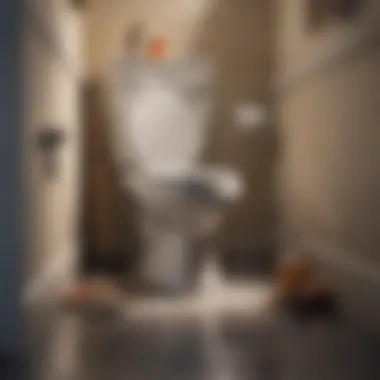
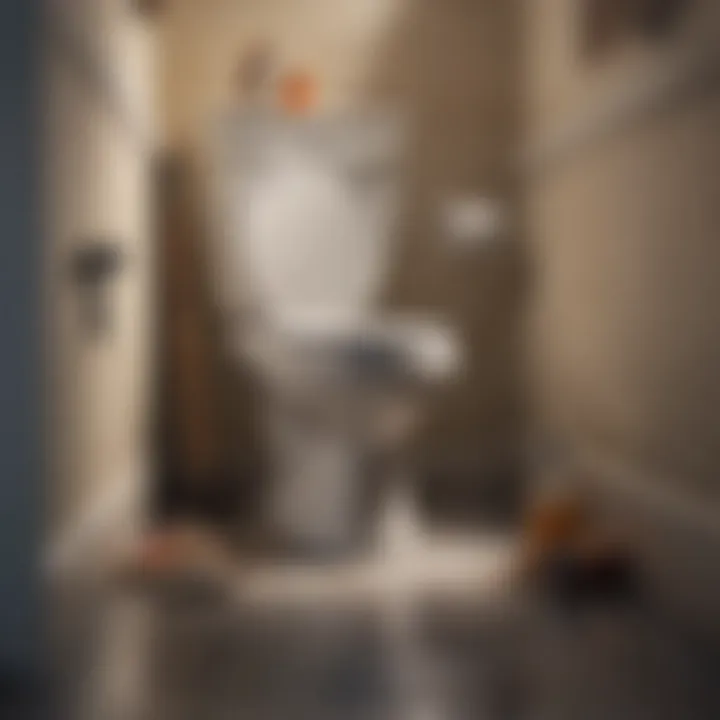
Intro
A clogged toilet is a common issue that can lead to frustration and inconvenience for homeowners. Understanding the causes of clogs and knowing how to resolve them efficiently is essential. This guide provides practical solutions and insights to address this household problem. From identifying the underlying reasons behind clogs to utilizing the right tools, we aim to empower readers with the knowledge necessary to restore functionality to their toilets.
In this article, we will cover various methods effective for unclogging toilets, the tools you might need, and steps to prevent this situation from occurring in the future. This comprehensive approach caters to DIY enthusiasts and those who may prefer a straightforward method for such repairs.
Foreword to Toilet Clogs
Toilet clogs are a nuisance that every homeowner encounters at some point. It is essential to understand the mechanics of toilet functionality first. Recognizing how toilets work can provide insight into why clogs occur and how best to address them. This section sets the stage for discussing the common causes of clogs, crucial tools, and effective techniques for unclogging.
Grasping these concepts not only aids in resolving immediate issues but also prepares homeowners to prevent future problems. Understanding toilet clogs enables individuals to act quickly, reducing the risk of water damage and additional plumbing issues, which can become costly over time. Here, we delve into the fundamentals of toilet operation and examine the prevalent reasons behind clogs.
Tools Required for Unclogging Toilets
Clearing a toilet clog effectively requires the right tools. This section will detail the essential implements necessary to rectify the situation efficiently. Understanding these tools can empower homeowners to deal with clogs quickly and minimize unnecessary frustration.
Plunger
Types of plungers
Plungers are a staple in any household, known primarily for their straightforward design. The two most common types are cup plungers and flange plungers. The cup plunger has a concave shape, making it ideal for flat surfaces like sinks, while the flange plunger has an extended rubber piece protruding from the cup. This unique feature allows it to fit more snugly into the toilet bowl's drain. The flange type is generally the more beneficial choice specific for toilets, as it can create a better seal, leading to effectively increased suction.
Advantages of using flang plungers:
- Better suction due to the flanged design.
- Easier to handle with larger openings.
Disadvantages of cup plungers:
- Less effective for toilets due to their design.
- Might require more force to clear clogs.
Choosing the right one
Selecting the correct plunger is critical. Homeowners should consider the design that matches their plumbing fixtures. A flange plunger is an optimal option due to its specific design to combat toilet clogs. A proper fit ensures maximum effectiveness, as a good seal allows for better pressure during plunging actions. Notably, some plungers come with ergonomic handles, which can offer additional comfort and control.
Considerations for choosing:
- Material quality - rubber should be durable and flexible.
- Handle length - should provide adequate grip without straining the hand.
Toilet Auger
How it works
A toilet auger, sometimes known as a plumbing snake, is designed for more stubborn clogs that a plunger cannot clear. It operates by inserting its flexible steel cable into the toilet's drain line. When the auger is turned, it can push through clogs or retrieve foreign objects lodged within. This device is considered beneficial for serious blockages, showcasing its specific construction tailored for toilet usage.
Notable feature:
- The cable can extend deep into the drain and navigate bends, making it ideal for challenging clogs.
Usage guidelines
When using a toilet auger, it is important to follow certain guidelines to achieve the best result. First, gently insert the auger into the bowl, ensuring not to scratch the porcelain. Then, slowly crank the handle while pushing forward until resistance is felt. The goal is to either dislodge the obstruction or hook any stuck item. While effective, users should be cautious to avoid damaging the plumbing.
Guidelines include:
- Always wear gloves to maintain hygiene.
- Use the auger only as directed to prevent misalignment or breakage.
Wet/Dry Vacuum
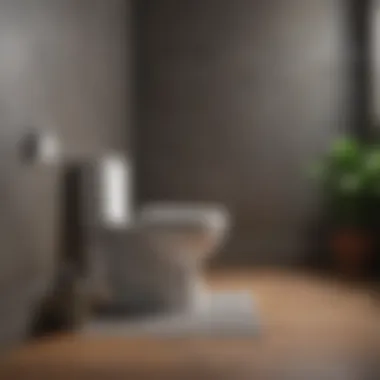
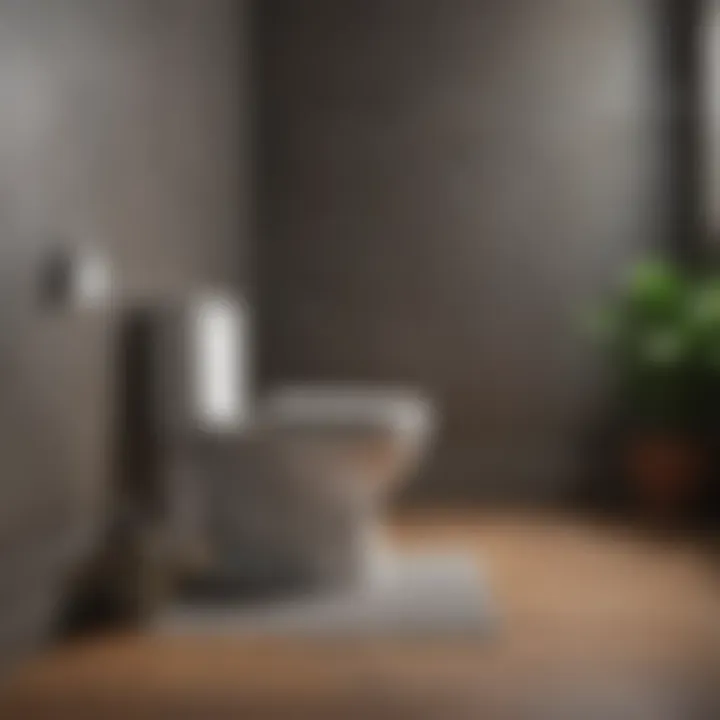
Application in unclogging
A wet/dry vacuum can be an unexpected hero in battling toilet clogs. This tool has the capability to suck water and debris from the toilet bowl effectively. To apply this method, ensure the vacuum is set to liquid mode before insertion. Position the nozzle tightly against the hole and turn on the vacuum to create suction. This solution can effectively remove water and clear up the blockage without the mess that other methods might create.
Key characteristic:
- Vacuum capability, which offers a clean and effective unclogging method.
Precautions to take
Using a wet/dry vacuum does come with some precautions. Users need to make sure that the vacuum is adequately sealed to prevent leaks. Moreover, it's essential to empty the contents properly after use to maintain vacuum performance. Always consult the user manual for specific instructions regarding toilet use, as not all vacuums are designed for this purpose.
Safety tips include:
- Wearing gloves while handling the vacuum.
- Avoiding plunging movements to prevent bowl damage.
Chemical Drain Cleaners
Types available
Chemical drain cleaners serve as quick solutions to unclog toilets, although they should be used carefully. Various types are available, such as alkaline-based, acidic, and enzymatic cleaners. Alkaline drain cleaners can dissolve organic matter with their high pH, while acidic cleaners affect mineral deposits. In contrast, enzymatic cleaners are considered less harsh, promoting the breakdown of waste naturally. For environments where aggressive substances are an issue, enzymatic options would be more beneficial.
Different types include:
- Alkaline-based cleaners (effective but harsh).
- Acidic cleaners (strong and quick).
- Enzymatic cleaners (safer, slower).
Environmental considerations
A greater awareness of environmental impact makes the choice of chemical cleaners more significant. While powerful, many traditional drain cleaners contain caustic agents that can harm plumbing systems and ecosystems. Choosing eco-friendly options is critical for those concerned with sustainability. It’s essential to review the ingredients to ensure responsible usage. This consideration sheds light on the balance between efficiency and environmental preservation.
Environmental factors to observe:
- Look for biodegradable formulas.
- Assess the potential for pipe damage when using strong chemicals.
Step-by-Step Unclogging Techniques
Toilet clogs can be one of the most frustrating household problems. Understanding how to methodically address these issues can save a lot of time and resources. This section aims to provide practical and efficient methods for unclogging toilets. Each technique is broken down into easier steps, which not only help in addressing the immediate problem but also support a deeper knowledge of toilet maintenance.
Using a Plunger
Preparation steps
Before using a plunger, proper preparation is essential. This step involves gathering your materials and ensuring the environment is suitable for the task. A well-prepared space can lead to more effective results. The key characteristic here is the thoroughness of your setup. This is a popular choice because it minimizes mess and maximizes efficiency.
Start by placing old towels or rags around the base of the toilet to catch any water that might spill. Additionally, ensure the plunger is in good condition. Check the rubber end for any cracks or wear. A unique feature of this preparation is the emphasis on reducing the risk of splashes and spills, which is often overlooked. This preparation makes cleanup easier and keeps the area hygienic.
Effective plunging techniques
Knowing how to plunge effectively is a cornerstone of this unclogging method. The key characteristic of this technique lies in the plunging motion. It is not just about pushing; it requires a rhythm and strategy. This method is beneficial because it utilizes the physical strength of the user and can often resolve clogs without needing additional tools.
Begin by positioning the plunger over the drain of the toilet bowl. Make sure it covers the hole completely. Then, push down with steady pressure and pull back up quickly, repeating this motion several times. A unique feature of effective plunging is how it can often clear smaller clogs that might not require other methods. However, if the clog is too tough, this method alone may not suffice.
Using a Toilet Auger
How to insert and maneuver
Inserting and maneuvering a toilet auger requires some finesse. This tool is designed to reach deeper into the plumbing than a plunger can. The main contribution of this method is its ability to tackle more stubborn clogs. The key characteristic of using an auger is its flexible coil, which can navigate bends in pipes.
To use a toilet auger, feed the cable into the toilet bowl and slowly turn the handle. This rotating action allows the cable to break up or snag the blockage. The advantage of this technique is that it can reach problematic areas that usually escape other tools. However, one must ensure that the auger's end does not damage the porcelain. Patience is crucial during this process, as forcing it can lead to more problems.
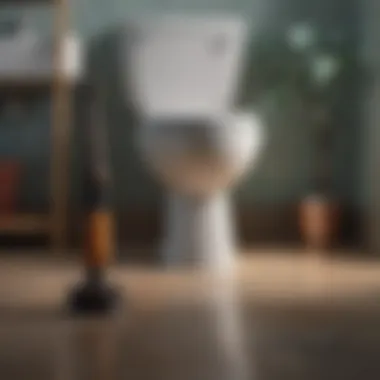
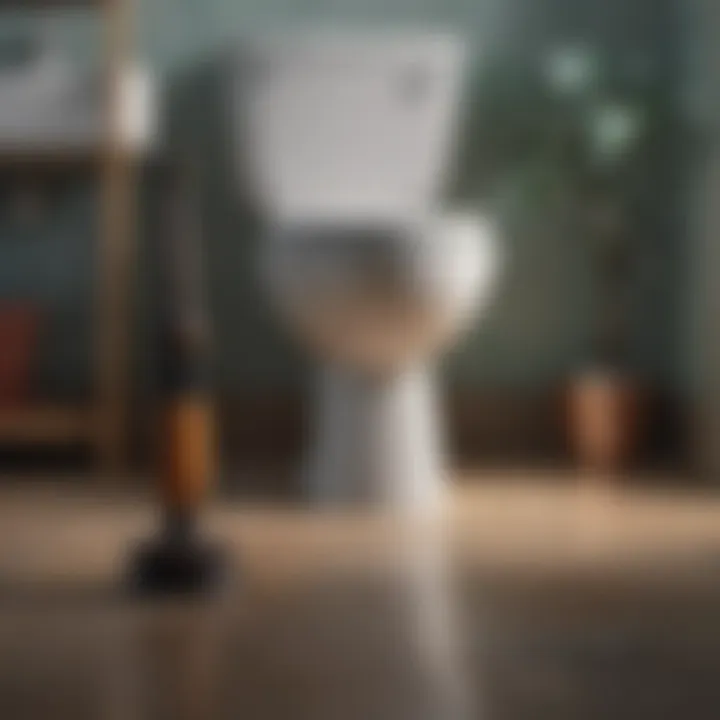
Removing obstructions
Once the auger has been maneuvered into the clog, the removal process begins. The goal here is to either break through the obstruction or pull it out. The key characteristic in this step is the flexibility of the auger, allowing it to navigate and dislodge various materials. This method is beneficial because it often clears serious blockages without the risk of chemical damage.
When the auger reaches the clog, continue to turn the handle. You may feel resistance, which is an indication of the clog. If you can break through it, pull the cable back while continuing to turn the handle. The unique feature of this technique is its ability to clear tough blockages that might resist simple plunging. Still, it requires skill to execute properly without causing any harm to the toilet.
Wet/Dry Vacuum Utilization
Setting up the vacuum
Setting up a wet/dry vacuum is a practical method that many homeowners overlook. This method's contribution to unclogging is its ability to remove water and debris effectively. The key characteristic of a wet/dry vacuum is its power and versatility. It can handle both liquids and solids, making it appropriate for various types of clogs.
Begin by removing as much water as possible from the toilet bowl. Position the vacuum hose at the drain and ensure it forms a tight seal. This step is crucial to maximize suction. The unique feature of setting up the vacuum is how it allows you to tackle the issue without introducing a mess. However, one must ensure the vacuum is specifically designed for wet use to avoid damage.
Steps to effectively unclog
Utilizing a wet/dry vacuum involves several steps that can quickly yield results. The main contribution of this method lies in its efficient suction power. The key characteristic here is its ability to clear large amounts of waste swiftly. This technique is desirable due to its quick and effective unclogging capability.
After securely setting up the vacuum, turn it on and allow it to suck up any water and waste. Once you see improvement or the water level decreases, turn it off. Clean the vacuum and repeat the process if necessary. A unique feature of this approach is the reduction of manual labor compared to plunging and augering. However, it requires care to handle and clean the vacuum properly post-use.
Chemical Drain Cleaners Implementation
Application methods
Chemical drain cleaners can be effective when used correctly. The key aspect of this method is understanding how the chemicals react with the clog. Its appeal lies in convenience; many products are available at local stores for immediate use.
When applying a chemical cleaner, carefully read the instructions on the label. Proper dilution and application ensure effectiveness and safety. The unique feature of this method is its ability to clear organic material through chemical reactions. Still, caution is necessary, as improper use can lead to damage of plumbing fixtures.
Safety precautions
Safety should always come first when dealing with chemicals. The key characteristic of this method is the potential hazards associated with the cleaners used. This technique is pragmatic, offering a quick solution but requires careful handling.
Wear gloves and goggles to protect yourself from splashes when using these products. Ensure the area is well-ventilated to minimize inhalation of fumes. The unique feature here is how safety preparations can prevent injuries. While chemical solutions might be effective for immediate clogs, they should not be relied upon too heavily due to the potential for damage to the plumbing over time.
Preventative Measures for Future Clogs
Clogs can be a distressing issue. Understanding what contributes to toilet clogs is essential. Preventative measures can save homeowners from unnecessary stress and emergency repairs. Taking a proactive approach is beneficial. It can lead to smoother toilet operation and reduce future headaches.
Educating Household Members
Proper toilet etiquette
Proper toilet etiquette is crucial for maintaining a functional plumbing system. Educating household members about what can be flushed is important. This knowledge helps minimize the risk of clogs. A key characteristic of proper toilet etiquette is awareness. Encouraging family to be conscious of their flushing habits can establish a strong foundation for toilet maintenance.
The unique feature of this approach is its simplicity. It requires no special tools or treatments. Instead, it relies on communication and understanding among members. The advantage of fostering this behavioral change is immeasurable. It can lead to increased respect for the household plumbing.
Items to avoid flushing
Understanding items that should not be flushed is equally vital. Common culprits include paper towels, feminine hygiene products, and wipes labeled as flushable. These items contribute significantly to toilet blockages.
The key characteristic of avoiding such items is prevention. By educating everyone on what to keep out of the toilet, the risk of clogs reduces. This aspect of toilet maintenance is beneficial because it protects the plumbing system from serious damage.
A unique feature of this practice is its direct impact; it prevents a much larger problem later on. The disadvantage may arise if such items are accidentally flushed. However, the simple rule of disposal can steer clear of these issues and lead to an overall smoother toilet experience.
Regular Maintenance Practices
Routine inspections
Conducting routine inspections of the toilet is a fundamental practice. It helps identify any signs of wear and tear or potential issues before they escalate. The key characteristic of these inspections is their preventative nature. Regular checks provide peace of mind, ensuring that the toilet is functioning correctly.
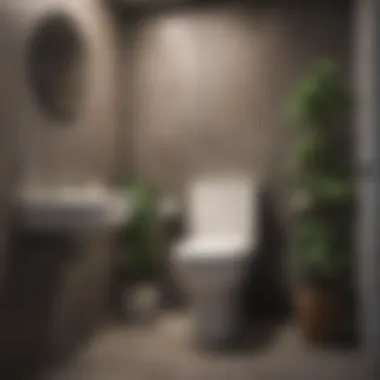

The unique feature of this maintenance practice is its low-cost implication. A brief examination may prevent costly repairs. However, neglecting inspections may lead to serious plumbing complications. Homeowners can save themselves time and money by staying vigilant during these routine assessments.
Periodic flushing with hot water
Periodically flushing the toilet with hot water can help maintain its efficiency. This technique can aid in dissolving any minor blockages or buildup in the pipes. The key characteristic of this method is its simplicity. It requires no special products or extensive procedures, just hot water.
The unique feature is that it can help prevent clogs before they become serious. Over time, this practice can enhance the overall performance of the toilet. A disadvantage might be that it is easy to forget to implement this strategy regularly. However, with a commitment to periodic flushing, toilets can remain cleaner and function better.
When to Call a Professional
Calling a professional plumber can be a critical decision when dealing with persistent toilet issues. Some problems can be resolved with DIY methods, but others require expert intervention. Understanding when to seek help is paramount in preventing further damage to your plumbing system.
Signs Indicating a Serious Problem
Frequent clogs despite efforts
Frequent clogs indicate a deeper issue that surpasses typical household mishaps. If you find yourself unclogging the toilet repeatedly within a short span, it may suggest a major blockage in the drain line or additional plumbing concerns. This recurring problem disrupts daily life and can lead to frustration.
The key characteristic of this issue is its persistence. Even after attempting various home remedies and tools available, the problem continues to persist. This point makes it a core focus in this article. Ignoring frequent clogs may result in more severe plumbing disasters later on.
The unique feature of this situation lies in its indication of a systemic flaw; it is not merely a nuisance but a signal that something is wrong. Thus, counting on basic unclogging tactics may not be sufficient. In this scenario, enlisting a professional with plumbing expertise is generally advisable, as they can accurately assess and rectify the underlying issues.
Backed up plumbing in multiple areas
When several areas within the home exhibit backflow or slow drainage, understanding this condition is essential. This indicates that the cause of the problem exists further down the plumbing system. Such occurrences can point to significant clogs, tree roots invading pipes, or even breakage in the main sewer line.
The distinct feature of backed up plumbing is its widespread impact across various fixtures in your home. This characteristic makes it a crucial point worth addressing in this article. Multiple backed-up areas underscore the importance of the issue and often suggest that the problem exceeds minor toilet clogs. Instead, it may encompass your entire plumbing infrastructure.
Engaging a professional for such circumstances is wise because they have the tools and experience needed to evaluate the plumbing system as a whole. Moreover, they can provide tailored solutions that DIY methods cannot achieve, minimizing the risk of secondary problems later on.
Understanding Plumbing Systems
Complexity of plumbing issues
Plumbing systems are intricate and multifaceted. Homeowners often underestimate the complexity involved. A toilet clog may seem straightforward, but if analyzing from the plumbing perspective reveals a longer chain of dependencies. This complexity underlines the article's emphasis on understanding plumbing before attempting repairs.
The distinctive aspect of plumbing complexity arises from its interconnected nature. Pipes link various components which can result in cascading issues if not handled correctly. This characteristic reinforces the article's message that not every issue can be resolved with simplistic solutions.
In this light, recognizing the system’s complexity can aid in appreciating when involvement from a professional becomes necessary. Without expert insight, tackling these plumbing challenges may inadvertently worsen the situation, requiring more extensive repairs later.
Risk of self-repair without knowledge
Attempting to manage plumbing repairs without understanding the system can lead to costly errors. The risk involves not only financial implications but also the potential for significant water damage in your home. Many homeowners jump into repairs, armed only with basic tools and online tips, which might not provide solutions for complex problems.
The core feature of this risk is that it stems from a lack of knowledge. A well-intentioned attempt might inadvertently aggravate plumbing issues, necessitating professional intervention afterward. This makes it a point of primary importance in this article.
In comprehension of how delicate plumbing systems operate, the advice here encourages seeking professional support when facing uncertainty. Although home repairs can be economically attractive, weighing this option against possible expenses incurred later is crucial. Sometimes, the cost of proactive professional help can save more in the long run.
End
The conclusion section of this guide serves several crucial functions. Firstly, it reinforces the knowledge and strategies that readers have gathered. Unclogging a toilet can be a daunting task, but with the right tools and techniques, it can be managed effectively by anyone. The importance of this chapter lies in summarizing the overall message of the article: understanding the causes of clogs and knowing how to address them through practical methods enhances one’s confidence in handling such a common household issue.
Summary of Key Points
In this article, we have covered the following key points:
- Understanding Toilet Functionality: Grasping how toilets work helps in identifying why clogs occur.
- Common Causes of Clogs: Familiarizing oneself with typical reasons for blockages, like flushing inappropriate items or excessive toilet paper.
- Essential Tools for Unclogging: Knowledge of tools such as plungers, toilet augers, and wet/dry vacuums is critical for successful unclogging.
- Step-by-Step Unclogging Techniques: Detailed methods for using each tool effectively provide a clear path for resolution.
- Preventative Measures: Educating household members and implementing regular maintenance helps avoid future issues.
- When to Call a Professional: Recognizing serious plumbing problems ensures that not all issues must be tackled alone.
This summary recapitulates the guide’s core elements and encourages readers to engage with the material presented.
Final Thoughts on Toilet Maintenance
Maintaining a toilet goes beyond occasional unclogging. Regular maintenance practices, such as routine inspections and periodic flushing with hot water, can extend the life of plumbing systems. Additionally, proper education for household members is essential. Teaching everyone about what is appropriate to flush and what to avoid minimizes the chances of clogs, thus saving time and reducing frustration.
In closing, while clogs may seem like a common nuisance, understanding their roots and knowing how to deal with them effectively can simplify the lives of homeowners. Embracing these strategies not only ensures a smoother experience but also cultivates a sense of control over household management.















